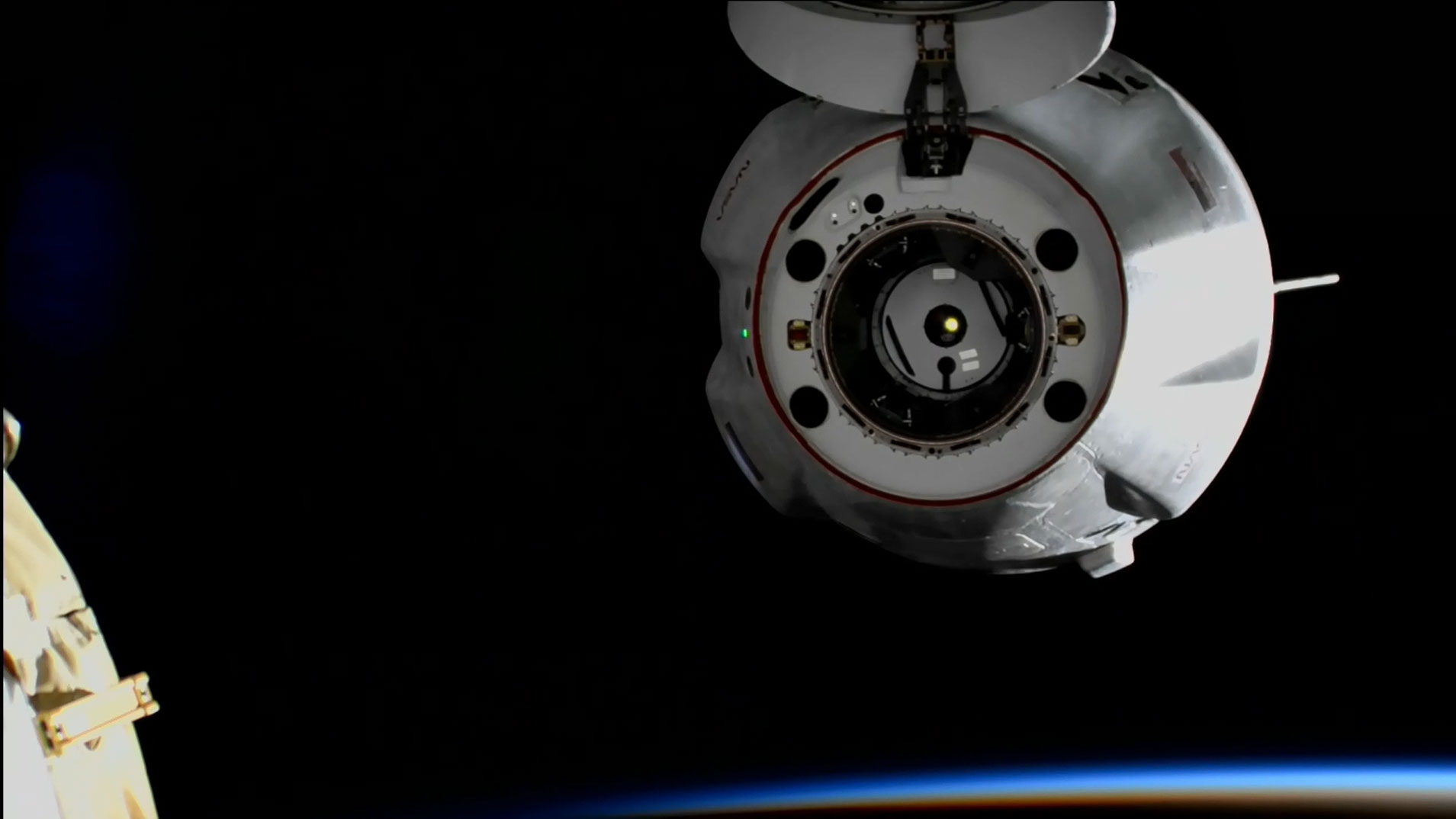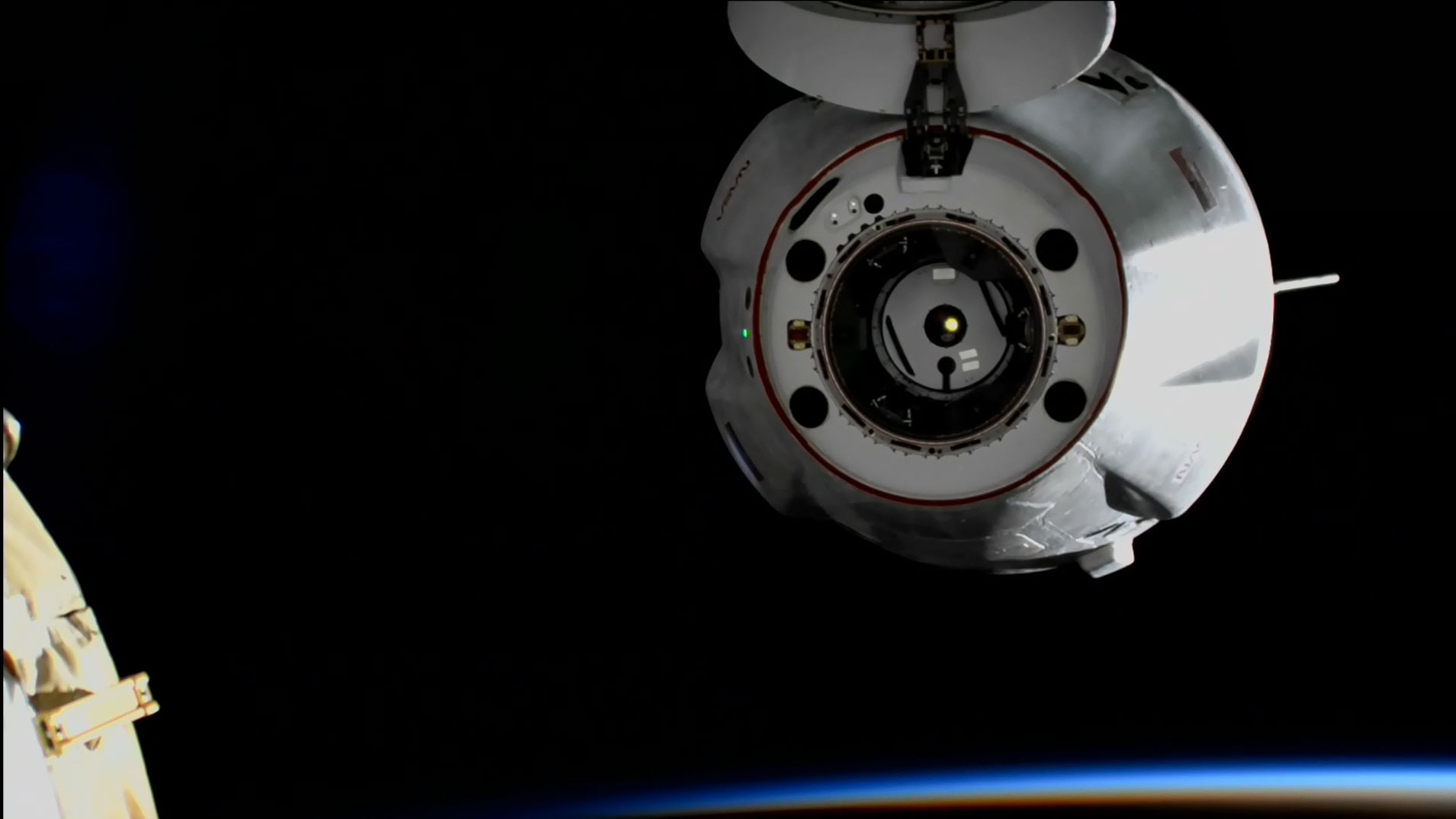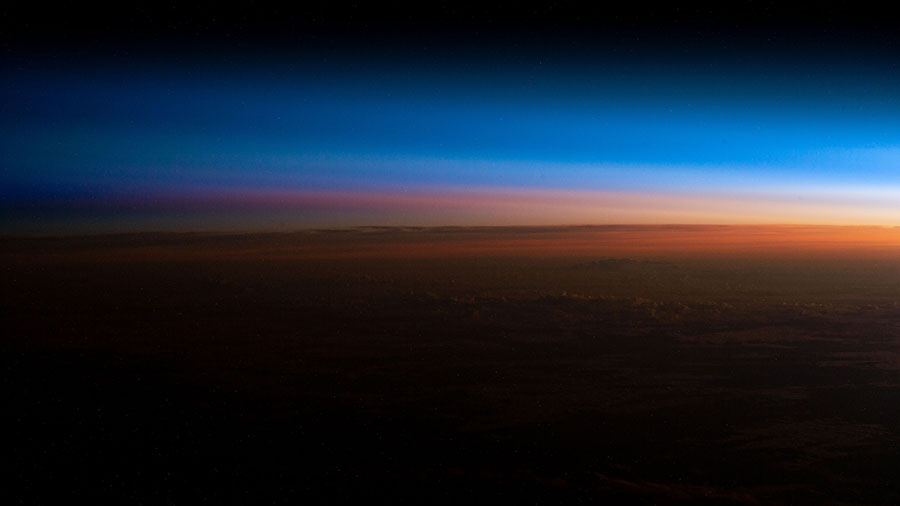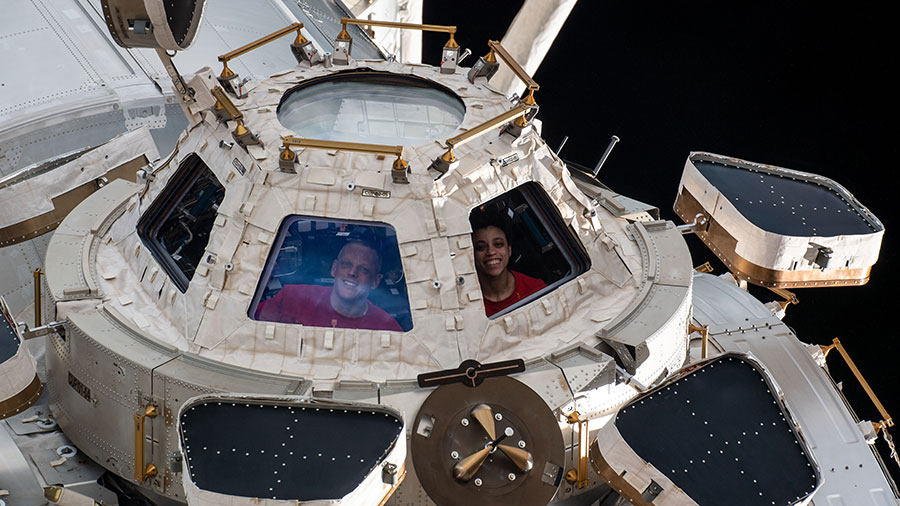
Crew health and space biology were the top research objectives for the Expedition 70 crew at the beginning of the week. The International Space Station residents also had their hands full with a host of standard lab maintenance tasks. Meanwhile, the SpaceX Dragon cargo spacecraft looks to Wednesday at the earliest for its departure.
Observing the effects of weightlessness on a variety of life forms including humans is a priority for doctors and scientists as NASA and its international partners plan longer missions farther out into space. Researchers are learning how everything from the tiniest organisms, space-grown vegetables, to astronauts adapt and survive in the harsh environment of microgravity.
NASA Flight Engineer Jasmin Moghbeli kicked off her day strapping on the Bio-Monitor vest and headband to test their ability to comfortably monitor an astronaut’s health throughout the day. The wearables contain a data unit recording a crew member’s cardiovascular fitness for the Space Health investigation. She then spent the afternoon treating cell samples inside the Kibo laboratory module’s Life Science Glovebox for the Space AGE health study to learn more about the biology of aging and its effects on disease mechanisms.
A pair of CubeSats were deployed outside the orbital outpost today to explore voice and imagery transmissions and test future planetary probe technologies. Flight Engineer Satoshi Furukawa from JAXA (Japan Aerospace Exploration Agency) pointed his camera outside the Kibo lab and photographed the two small satellite deployments. Afterward, the JAXA astronaut serviced optical hardware to support a regenerative medicine experiment. Finally, Furukawa readied the SAFFIRE-VI fire safety experiment that will be conducted remotely aboard the Cygnus space freighter after it departs the space station.
Astronauts Loral O’Hara and Andreas Mogensen started Monday morning stowing spacewalking tools in the Quest airlock. The duo then split up as O’Hara tested a VHF antenna and inspected the Harmony module’s crew quarters. Mogensen from ESA (European Space Agency) installed air sensors in Harmony then inspected hoses inside the COLBERT treadmill.
Cosmonauts Oleg Kononenko and Konstantin Borisov worked in the Nauka science module checking and photographing eggs packed inside a centrifuge for a Roscosmos biology study. Flight Engineer Nikolai Chub spent his day working on life support systems inside the Zarya and Zvezda modules.
NASA and SpaceX continue to target no earlier than 5:05 p.m. EST Wednesday, Dec. 20, for the undocking of the company’s 29th Dragon commercial resupply services mission from the International Space Station.
Coverage of Dragon’s departure Wednesday will begin at 4:45 p.m. on the NASA+ streaming service via the web or the NASA app. Coverage also will air live on NASA Television, YouTube, and on the agency’s website. Learn how to stream NASA TV through a variety of platforms including social media.
Additional undock and return opportunities also are being considered as joint teams continue to work to identify the best autonomous undocking and return weather conditions as a cold front passes through the splashdown zones off the coast of Florida.
More updates will be made following the next weather review about 24 hours prior to Dragon undocking from the space station.
Learn more about station activities by following the space station blog, @space_station and @ISS_Research on X, as well as the ISS Facebook and ISS Instagram accounts.
Get weekly video highlights at: https://roundupreads.jsc.nasa.gov/videoupdate/
Get the latest from NASA delivered every week. Subscribe here: www.nasa.gov/subscribe



